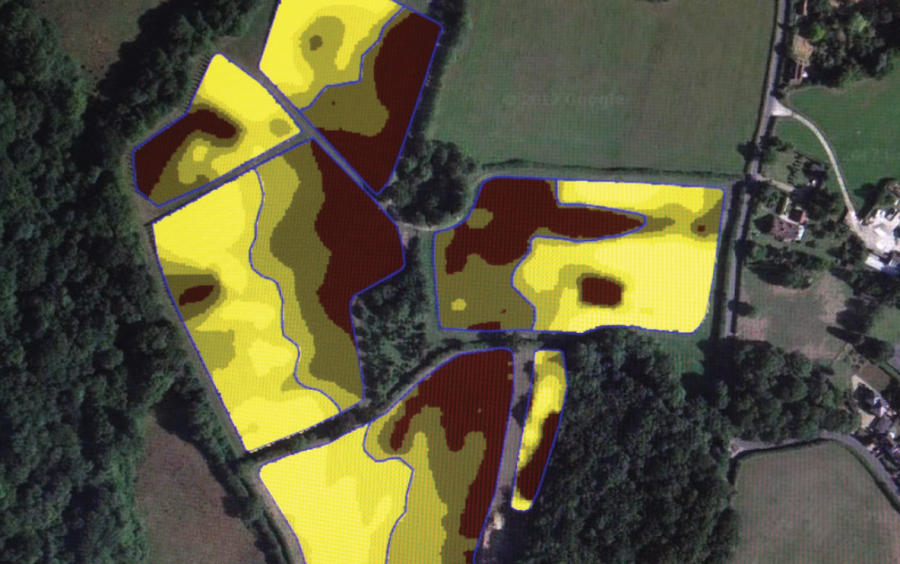Good vine health begins with the soil.
Agrii is looking forward to contributing a topical article to each edition of this exciting new publication – every month different members of Agrii’s Fruit Agronomy Team will provide insight into issues and opportunities appropriate to the time of year. This month’s article was written by Agronomist Gary Saunders. Julian Searle will be a regular contributor.
Why is a detailed knowledge of the soil in a vineyard of vital importance? The answer to this question is complex, as soils fulfil a range of functions from the basic provision of anchorage and support for the vine, to the supply of nutrients, air and water. However, information regarding the soil in a vineyard can be used in two main ways: to provide correct nutrition, and, to influence porosity and therefore temperature across the vineyard.
Temperature is a major factor in determining the suitability of a site for viticulture. Vines start to grow at above 10°C and each variety requires a specific number of growing degree days, comprised of temperature above 10°C multiplied by days. Soils therefore need to warm up early in the year and retain their heat into the autumn, this is best achieved by a combination of aspect and drainage. North facing wet sites are much colder than south facing well drained sites.
Knowledge of pH and nutrition within a soil is used to determine the rate of liming and nutrient additions in the form of fertiliser that are required for optimum production.
Soil is inherently variable and can change widely across a vineyard, it is therefore important to assess the soil throughout the whole of the site to determine this range of variability. Previously whole field analysis was often used to determine the soil type and nutrient status, but this approach does not take into account the variability of the soil across the field and does not allow fine-tuning of input requirements according to this variability.
Agrii’s SoilQuest service is a modern surveying technique that can be used to determine the variability across a site in terms of aspect, soil texture and soil nutrition.
The first stage of the process is to scan the vineyard using a GPS enabled electrical conductivity scanner which measures conductivity at two depths, 30cm and 90cm. From this, two soil variance maps are created showing areas of high to low conductivity. A topographical map is also produced showing the direction of any slopes on the site. Management zones are then created according to the soil variation.
A separate soil sample is then taken for each zone within the vineyard, made up of a composite sample from soil cores across the whole area of the zone using an auto-sample spear mounted on a GPS enabled quad bike. This ensures that all samples are taken to the same depth and the location of each sample is known. The soil samples are then sent to an accredited laboratory for analysis of a range of components, commonly including: soil texture, pH, P, K, Mg but with the option of adding further analyses to create a tailor-made recommendation. Data is transferred to SoilQuest’s APS software to produce nutrient maps which can be viewed on computer, tablet or smartphone. From this information nutrient management and lime requirement plans are produced including GPS files for variable rate application, ensuring targeted application to all parts of the vineyard for maximum efficiency.
The results from soil texture analysis and the topography map can be used to assist in the creation of a land drainage plan, the benefits of which are twofold, firstly in preventing waterlogging and the associated root problems, and secondly enabling the land to warm up earlier.
The SoilQuest system has been used successfully within a number of vineyards, including the internationally acclaimed boutique grower producers Fox & Fox. Jonica Fox summarised the benefits that Agrii’s SoilQuest system has had: “It has been our single most important vineyard innovation this year, their quick and efficient work and thoughtful advice has allowed us to be more precise in applying soil conditioners like compost and both soil and foliar nutrients. Their work paid for itself in year one.”




